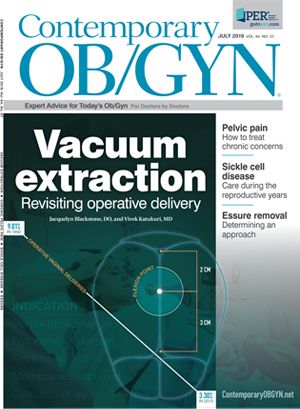Which factors predict likelihood of mesh revision?
Rates of revision surgery for mesh midurethral sling placement drop dramatically once a surgeon has reached a certain threshold of annual cases, according to results of a new study.
©lenetsnikolai - stock.adobe.com

Rates of revision surgery for mesh midurethral sling placement drop dramatically once a surgeon has reached a certain threshold of annual cases, according to results of a new study. The research, which appears in Obstetrics & Gynecology, looked at how health system factors (surgeons’ annual surgical volume, specialty, and hospital type) affect risk of revision.
For the retrospective population-based cohort, de-identified administrative health data on all hospital visits between 2004 and 2017 from Alberta Health Services in Canada were examined. Using Canadian Classification of Health Intervention codes, the researchers identified women who underwent mesh midurethral sling placement and tracked whether they needed revision surgery, which was the primary outcome of the study. They also recorded exposure including the annual number of midurethral sling procedures performed by a surgeon, surgeon specialty, facility type, patient age, and concomitant prolapse repair.
Of the 21,028 women who received a midurethral sling for urinary incontinence during the 13-year study period, 1,517 underwent a concomitant mesh procedure for pelvic organ prolapse (POP). Those cases were censored from the final dataset, resulting in a sample size of 19,511 women. Mean follow-up for participants was 6.78 ± 3.59 years.
Cumulative rates of revision surgery were 3.84% (95% CI 3.54-4.17) at 5 years and at 10 years the rate increased to 5.26% (95% CI 4.82-5.74). The most vulnerable window for revision was the first year after placement, with 0.40% (95% CI 0.31-0.49) undergoing revision within 30 days and 2.15% (95% CI 1.95-3.52) within 1 year.
Surgeon experience was associated with revision, as was concomitant prolapse surgery. However, after 50 cases per year, odds of revision declined with each additional case (OR 0.99/case, 95% CI 0.98-0.99; OR 0.91/10 cases, 95% CI0.84-0.98). This decline plateaued at 110 cases per year. Surgeon specialty, hospital type, and patient age were not associated with outcome.
The authors note that while revision surgery occurs in just a small proportion of women undergoing midurethral sling placement, the number is not insignificant because each surgery comes with risk. They believe that this study is important because it can help identify ways to reduce risk and patients who might be at increased risk. Furthermore, because the data point to period of time when most repair surgeries occur, physicians may want to pay closer attention to their patients during the first year after sling placement.

Unlocking placenta accreta spectrum with single-cell gene targets
April 18th 2024Discover how cutting-edge single-cell RNA sequencing unveils molecular insights into placenta accreta spectrum disorders, potentially revolutionizing diagnostics and treatments for this life-threatening pregnancy complication.
Read More
Excessive gonadotropins in IVF: Effects on mosaicism and live birth
April 12th 2024A recent study revealed a correlation between high doses and prolonged duration of exogenous gonadotropin use during in vitro fertilization and increased embryonic mosaicism alongside diminished live birth rates, prompting reconsideration of dosage and duration protocols.
Read More
